We first came across the breath-taking textile sculptures created by artist Wendy Moyer when we were researching our article on Textile artists inspired by nature.
In this interview Wendy talks in fascinating detail about her unique approach to sculpting textiles by using heat to melt synthetic (and sometimes natural) fibers and how that came about quite by chance.
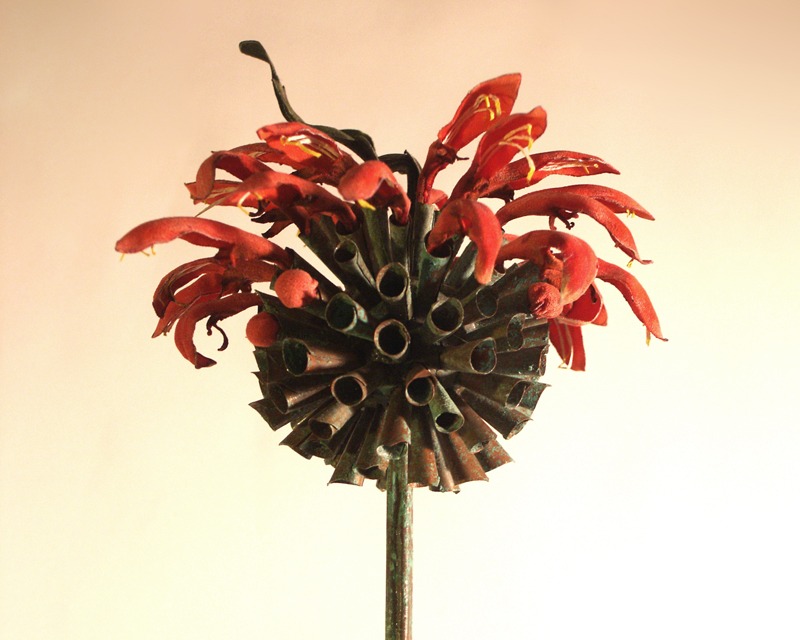
Textiles freed me artistically
What initially captured your imagination about textile art?
My maternal grandmother was a professional seamstress. She always had people coming and going with clothing that needed tailoring. Any off-cuts she gained from the alterations would be added to the stacks of other small bits of fabric. Most often these bits would turn into utilitarian quilts, but the very special pieces would be turned into dolls clothes – collecting and making dolls was a favorite pastime of hers.
As a kid with all those colorful bits… well, my imagination would run wild… what could we make? That was probably my first creative interaction with textiles, albeit one rooted in more functional uses.
My shift to textiles as a medium for my art happened much later in life – actually about 9 or 10 years ago. The man of my life asked why I had never looked to textiles as an art medium. Good question. I grew up in a family filled with seamstresses, quilters and crafters; I had been working with fabric and sewing since early childhood; the Fashion Institute of Technology in New York was my chosen campus for university; and yet here I was mid-thirties denying textiles as an art medium? Yep, that was an eye opening moment.
It was that ‘ahh haa’ moment that freed me artistically. It shifted my focus from a two-dimensional surface into the land of high texture and multidimensional forms. I had always desired to create in that space, but a connection with traditional sculpture media had eluded me. Fabric and textiles, on the other hand, well, they were close friends and now we were about to get much closer.
Burning, sculpting and sewing
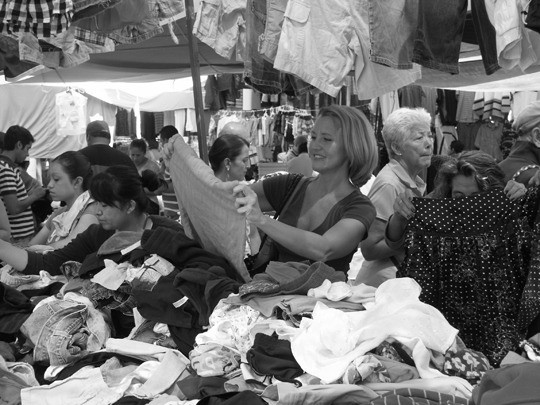
What is your chosen medium and what are your techniques?
Fabric – my medium of choice – specifically up-cycled discarded clothing or clothing that has reached the final link in fashion’s merchandising chain. I suppose the choice to work with discarded fashions came innately from early childhood spent with my maternal grandmother, a professional seamstress and a collector of all the scraps from alterations. Also, I live in Mexico and most of the fabric in fabric stores is not very high quality. Whereas I can get a wide variety and good quality designer fabrics scouring the clothing stalls at our ‘mercados.’ However that process is ‘catch as catch can’. Needless to say my studio is filled with discarded fashions I’ve picked up when I see them and all awaiting use when inspiration strikes.
While I use both natural and synthetic fibers, synthetics tend to be my ‘go-to’ fabrics since my primary sculpting technique involves fire and taking advantage of synthetic’s melting point. That said, sometimes the gossamer quality of silk is desired for a particular look. In those cases I’ve found that if I coat the fabric in a white glue and water mixture, when dry, the thin coating allows the fabric to respond much like a synthetic when ‘fire sculpting’. The sculpting time is far less since it is just a coating that can burn away, but if I’m quick about it the fire can still give it form without the loss of its diaphanous appearance.
I work with all kinds of fabric. So I think it goes without saying that sewing techniques are involved. Most often I opt for hand sewing, applying tucks or pleats on the fly as I sculpt, because many of my subjects are either small or quite intricate, or both.
However, I have developed my own finishing technique that allows me to achieve a natural suppleness to my final forms – fire sculpting. Fire as used with fabrics, particularly synthetics, is a bit like alchemy changing a once soft material whose natural inclination was to fold and drape into a rigid material that will hold it’s fold or drape forever.
Essentially my fabric or textile sculptures begin with an initial hand-stitched basic form (some items don’t need stitching, like a five petal flower). Then I paint them using a combination of airbrush and hand-painting. When thoroughly dry, I begin to sculpt them over a low flame (usually a candle flame). This is a process of high concentration and patience. I allow the heat to melt the paint and fibers together, and just at the point where the fabric starts to fall limp I remove it from the flame. In the few seconds before the fibers cool I quickly sculpt the curves and crevasses of a petal, for instance. This requires reheating and cooling a piece often. Taking the textile sculpture just to the brink of going up in flames, the point at which the fibers melt into one, and while still hot sculpting its form as it cools.
The idea of using fire to sculpt fabric evolved as I was singing the edges of a synthetic piece of fabric to prevent it from fraying as it was worked. I held the edge over the flame a little too long and it caught on fire. I quickly blew it out but then realized how moldable the edge was and when cooled it held its shape. Immediately I was cutting small scraps from the various pieces of clothing I had acquired and holding them over the flame. I had questions: how much would they melt before catching fire? If allowed to catch fire (and then blown out) how much more sculpting time would I have? Would the fire-sculpted form be held forever? Despite a couple singed eyebrows and a few blistered fingertips, I’ve continued to hone my fire-sculpting techniques that lend a more natural effect that I haven’t been able to replicate with a stitch.
A virtual sketch in my mind
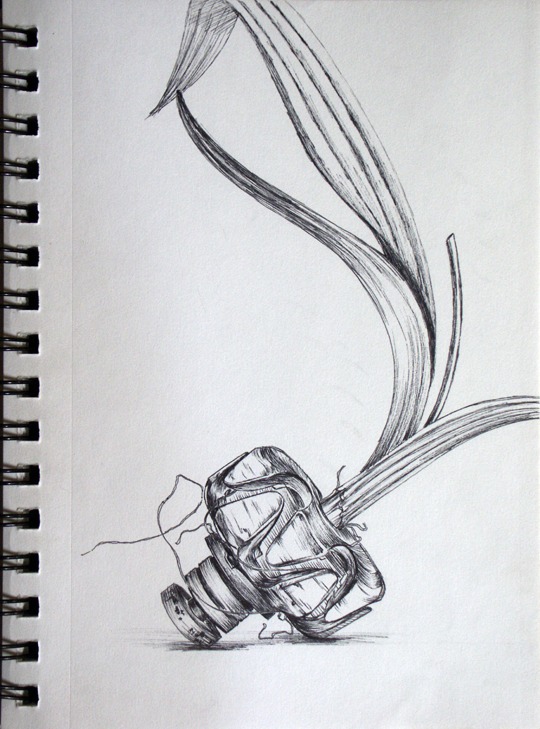
Tell us a bit about your process and what environment you like to work in?
Inspiration strikes often when I’m in the middle of working on a piece. That is a time when my hands know how to sculpt what I’ve envisioned and my mind is free to wander to the next creation. It is a time that I reflect on memories of stark contrast that made me stop and take notice. Most often those memories take account of a piece of nature existing in spite of its unlikely surroundings – a lily growing amidst otherwise barren rocks; a single wildflower along the shoulder of a heavily traveled highway miles from the nearest field of the same flowers; or the beautiful beetle that lingers on a hot roof deck for hours rather than contenting itself among the fields of cactus just meters away. It is this dichotomy and hyper focus on these somewhat odd vignettes that captures my attention and which I attempt to impart to viewers through my work.
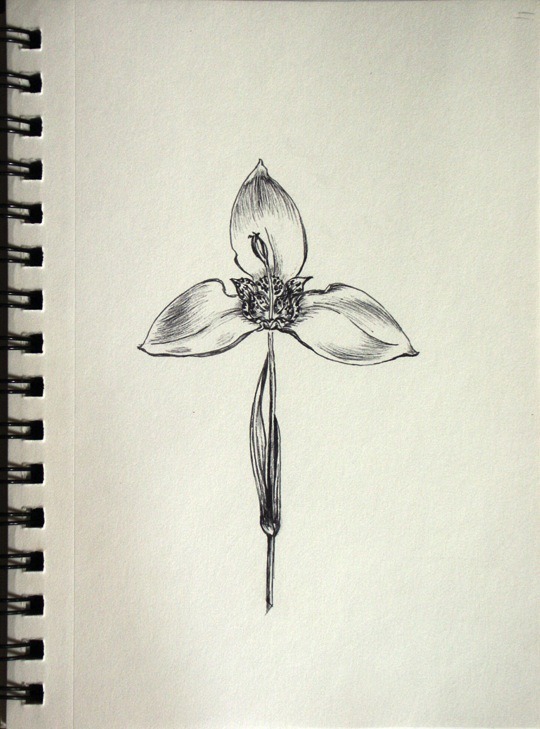
When I conceive the initial idea I hold a virtual sketch in my mind. Then, I begin to envision the details and logistics of what may be involved in the sculpting process. I pull that idea into a 3-D form (think wire frame CAD drawing) – still in my mind’s eye. I rotate that form in all directions and envision the specifics of how I will sculpt this piece. I suppose it’s a little like laying out a map for my hands to follow later.

The image of the new piece will fill my thoughts during quiet times and I’ll continually envision sculpting this single piece time and time again. Once I’m confident that I’ve mentally worked through any challenges I might encounter, I put pencil to paper. To look at my sketchbook you would see far fewer ‘loose’ sketches than tight drawings. Some may even think that the drawings were done after the pieces were completed. To the contrary, I usually draw the pieces out in great detail before I begin so I no longer need to keep it in my head. Getting it out on paper is the first time my hands get to learn the shape of what I’ve held in my mind for weeks. Once my hands take over my mind is free to wander memories in search of my next inspiration.
Moving towards textile sculptures
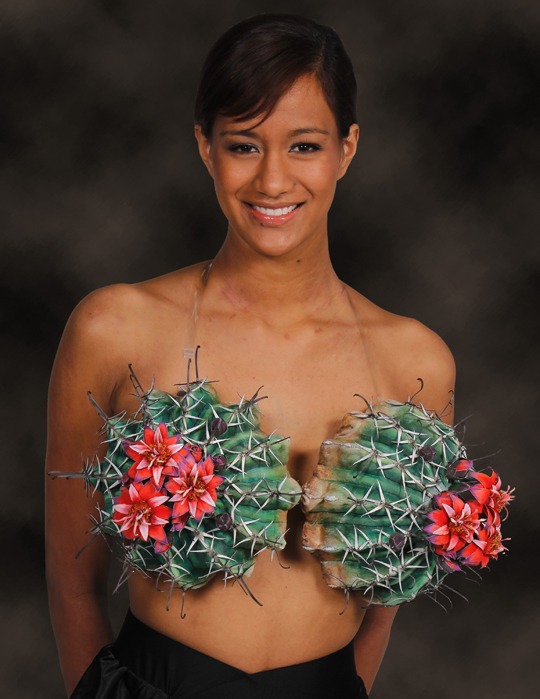
Tell us about a piece of work you have fond memories of and why?
‘Prickly Heat’, it will always hold a special place in my heart for many reasons, but most of all because it was my first piece to come off the wall. Previous to this piece my techniques were rooted in patchwork wall hangings. Not long after I transitioned from paints and canvas to textiles as a medium I was deviating from the traditional patchwork and incorporating higher relief and texture, but they all hung like tapestries. I still have a fondness for those initial pieces, but what I really wanted was to take the pieces off the wall and let them stand on their own. In fact the last wall piece I completed projected so far out from its backing, I had to add extra reinforcement just to get it to hang flat.
Then I came across the World of WearableArt™ (WOW) in a Google search and fell in love. This annual international show gives artists the venue in which to take art off the wall, put it on a model and show it in a theatrical performance. When I looked at the entrants from the 20+ years of the show’s history, I was hooked. These were neither garments nor costumes. The vast majority were pieces of art that only needed their model to exhibit on stage. I decided I would participate in WOW.
My subject matter had already shifted closer to home and I was sculpting various local Mexican flora regularly as relief work on my wall hangings. So, sculpting two fishhook barrel cacti in full lascivious bloom to cover the breasts of a model seemed a natural progression. Fortunately the year I decided to enter WOW was a year that one of the categories was the ‘Bizarre Bra.’
The process involved sculpting ‘Prickly Heat’ released me from wall-based designs and I worked without any of my preconceived barriers of ‘art.’ My only restriction: I couldn’t make the cacti so large and heavy that the model couldn’t carry them. That meant they couldn’t be stuffed; rather they were molded on a wire grid form, which would keep them relatively lightweight despite their size. This was my first piece entirely sculpted by hand – no machine involved. Each rib stuffed and stitched simultaneous in place to achieve the perfect form; each of 428 petals meticulously cut, painted and fire-sculpted; and all 580 spines cut from thick recycled brown plastic containers, softened over a flame and sculpted into the fishhook spines that give this barrel cactus its name.
As it happened, ‘Prickly Heat’ was the show’s first ever entry from Mexico, was awarded Commended for the Bizarre Bra Category, was purchased by the show for their Historic Collection, and is currently on a museum tour among 30 pieces chosen as the ‘best of WOW’.
All the recognition WOW has given me has been fabulous, but the skills and lessons learned through abandonment of traditional technique in lieu of anything necessary to achieve the unique art accepted onto the WOW stage is invaluable to the artist within. The lessons learned from ‘Prickly Heat’, as well as the discovery of new techniques and refinement of others, are now a part of my creative process and probably best illustrated in ‘Flor del Dragon’.

Here the main stalk of the ‘pitaya’ (dragon fruit) plant has been sculpted with fabric stretched over a wire form. This helps give the three distinctive ribs indicative to this plant. Each silken piece of the bud, bloom and fruit are individually painted, coated in a water/glue solution that is left to dry, fire-sculpted then assembled. Applying the water/glue mixture imparts more synthetic qualities to silk (or any other natural fiber) so that it can be fire-sculpted when dry – a technique I first used on ‘Prickly Heat’. Even the areole (the small roundish pads from which the spines protrude), made from heated solder applied directly to the fabric, stems from a technique originally tried on ‘Prickly Heat’ but the effect was too delicate for stage presence. Like all those after ‘Prickly Heat’, none of my conceptual drawings for ‘Flor del Dragon’ involved hanging on a wall. Now my textile sculptures stand on their own.
Pulling my work further from the wall
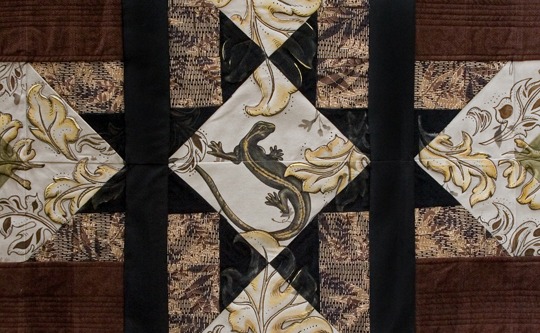
How has your work developed since you began and how do you see it evolving in the future?
When I first rethought fabric as my art medium I was drawn back to my family roots steeped in traditional sewing techniques. Although my early subjects are an evident homage to an Asian depiction of nature, my style leaned more toward familiar geometric designs remembered from childhood spent among seamstresses and quilters.
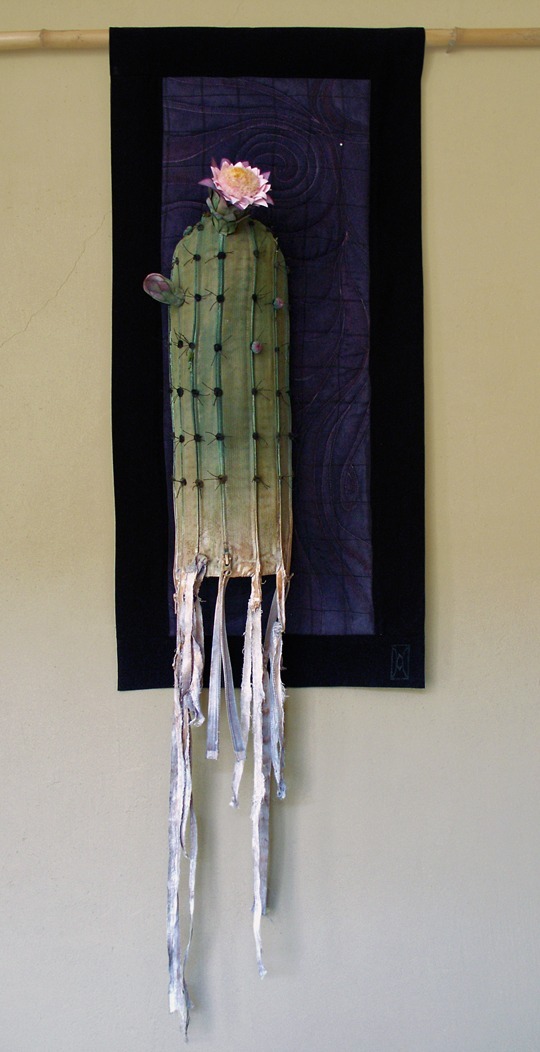

As I started to pull my work further from the surface of a flat wall, my subjects quickly changed to those in my daily environment more available for study – the flora and fauna of Mexico. In the initial 3-D wall hangings you can definitely see a transition – background elements are deviations from traditional patchworks while foreground elements are relief sculptures of organic silhouettes.
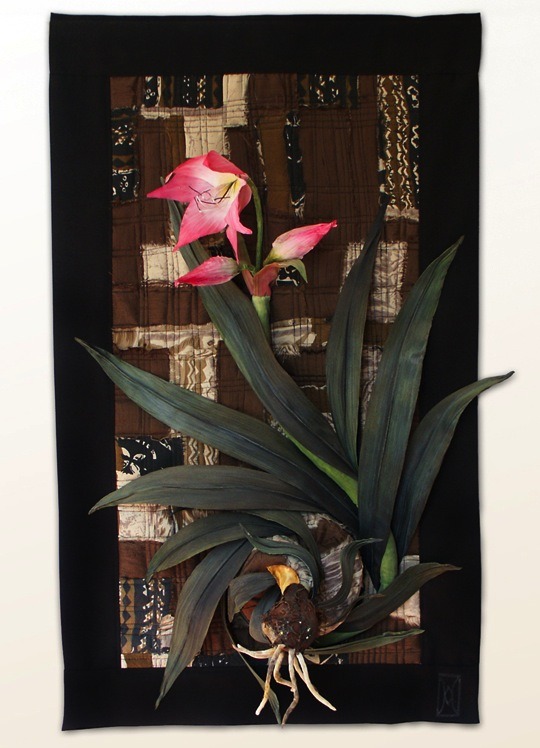
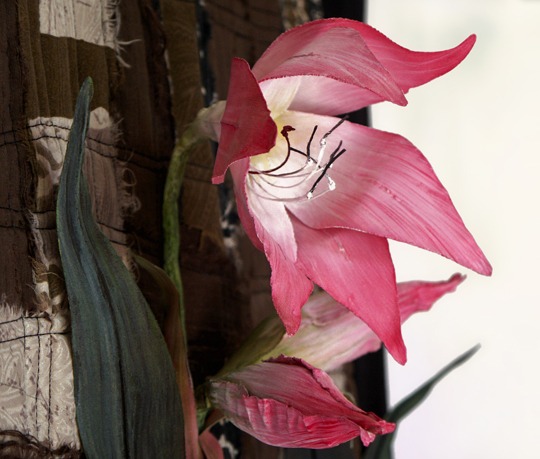
Today each piece is a self-standing sculpture often incorporating other materials used to compliment and often frame the primary subjects, which are always sculpted from up-cycled fabrics. Verdigris copper wire, broken wooden bowls, metal parts and even blown glass all stand as contrast to direct the viewer to the supple organic fabric forms.
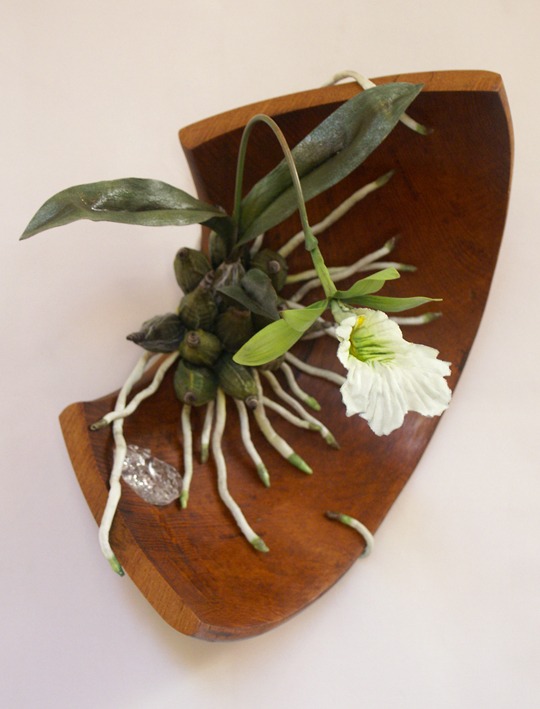
While my style and choice of how I depict my subjects have changed, the one constant is that my subjects always come from nature. Hyper focusing on a single natural element has always intrigued me. I don’t foresee that focus changing anytime soon, but that doesn’t mean it won’t evolve as I explore the depths of the roles nature plays in our lives.
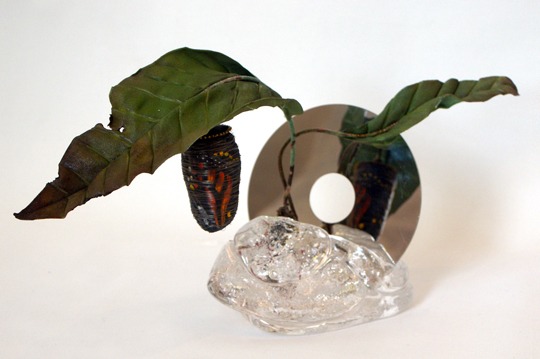
Currently I’m working within a series that explores nature’s survival in our increasing urban environments. These works seek to focus attention on the survival of the delicate part of nature held tenuous against cast-offs of industry from which it sprouts. As we become further removed from nature, day by day my inspirations for the continuation of this series grows.
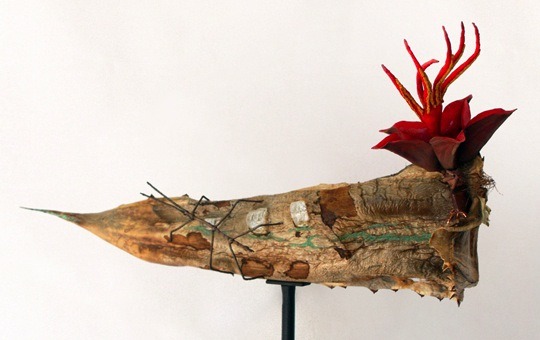
However over the next year I’ll be exploring two other concepts. The first, how nature quickly takes back what civilizations sought as improvements. Like the jungles took back the pyramids, local flora takes back the abandoned objects of our everyday lives that once held so much importance. I will also be exploring nature as witnessed through the eyes of her sentinels. Those seemingly endless moments in time where the crow stands captivated by a forest fire or a pet stands guard for its mistress – each bare witness to the effects we and nature have on one another before breaking the stare and turning back to their own lives.
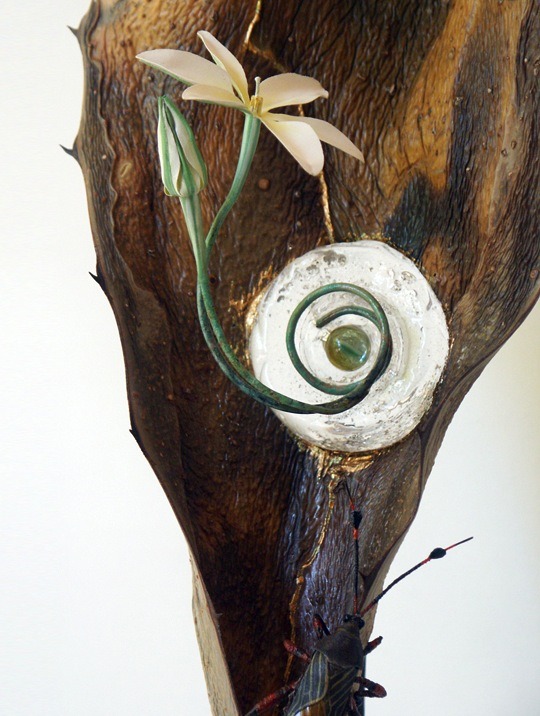
To find out more about Wendy and her work visit TextileArtistMx.com
You might also be interested in:
- Lindsay Taylor: 3D textile art
- Judith Scott: Uncovering innate talent
- Textile artists inspired by nature
If you’ve enjoyed our interview with Wendy and you are as fascinated by her work as we are, let us know by leaving a comment below or sharing this post on Facebook using the button below.
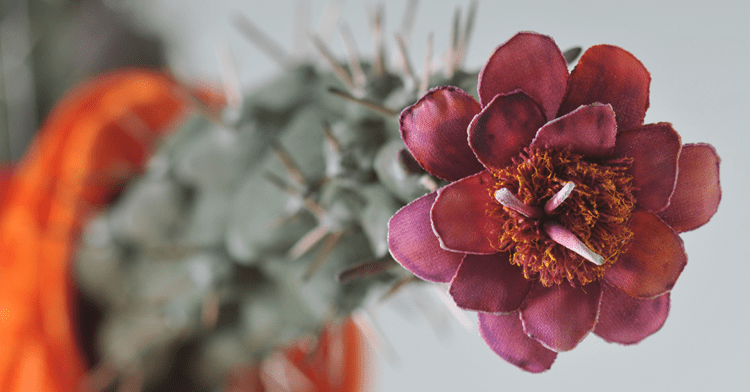

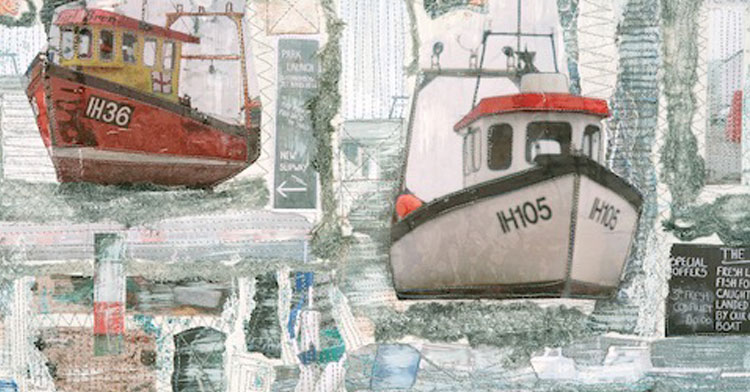
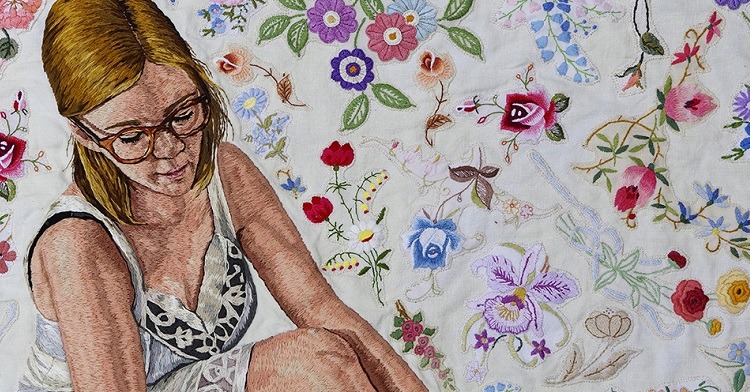
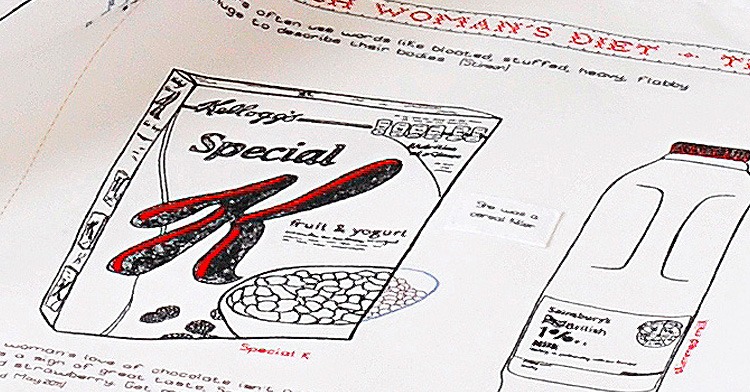
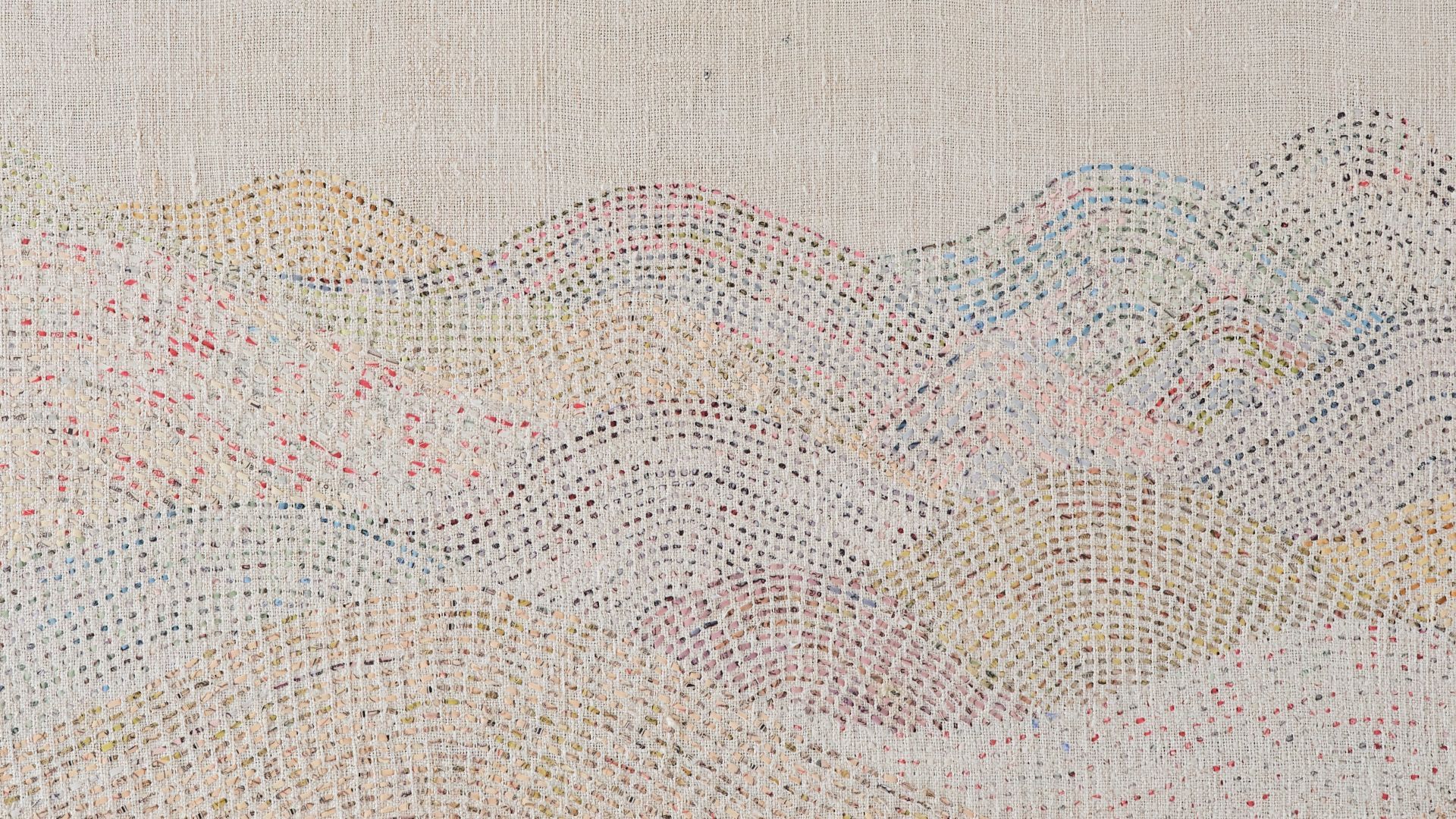
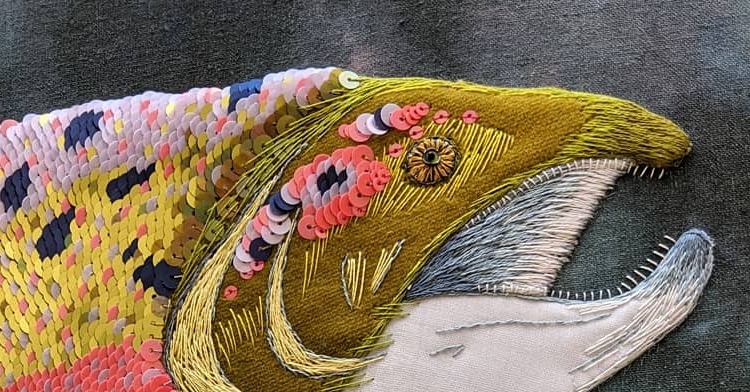
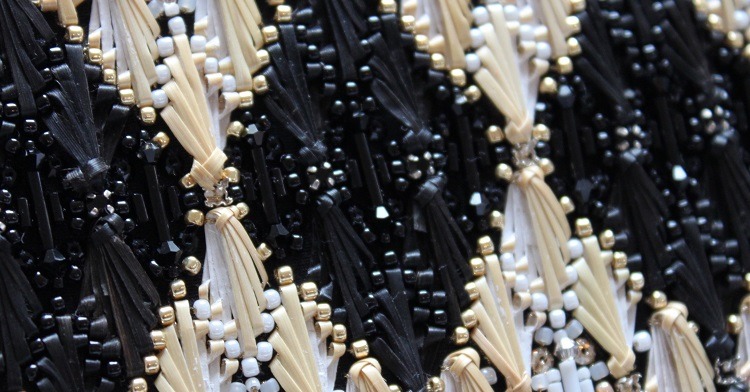
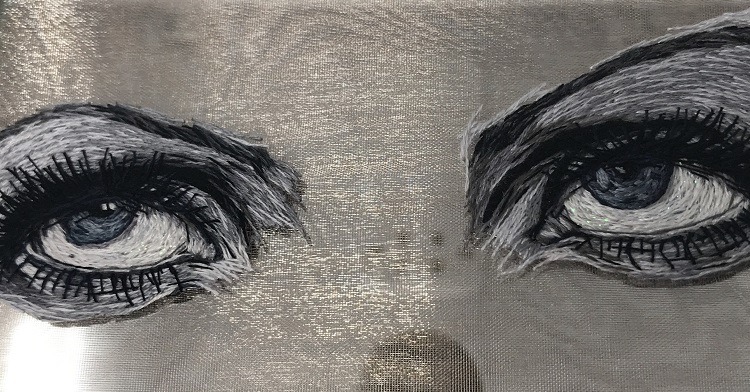
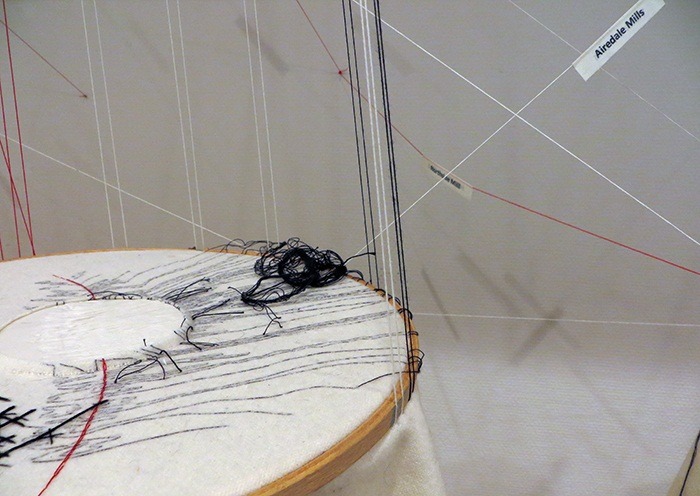
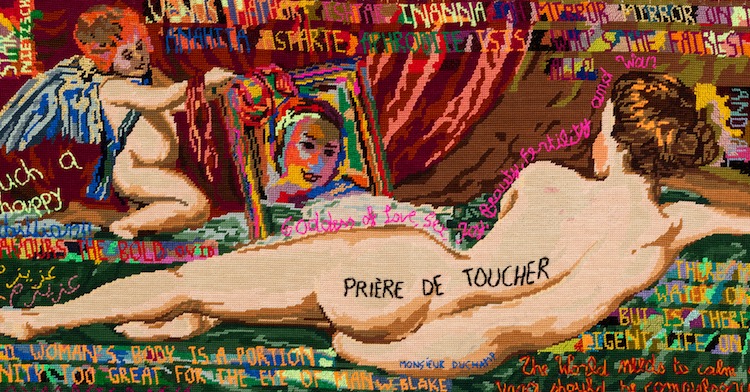
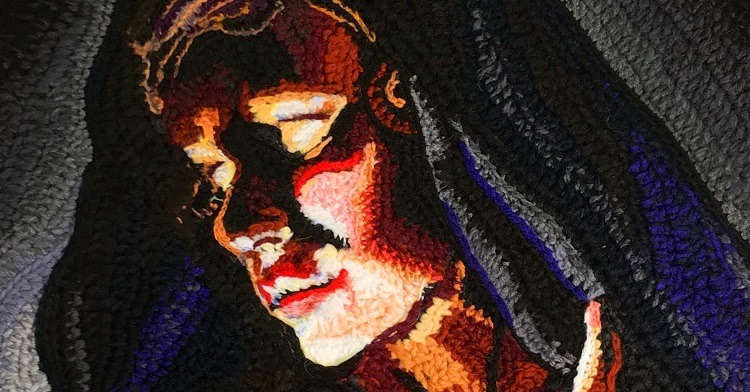
3 comments
Martha Perales
Dear Wendy
Congratulations. Tu trabajo es verdaderamente hermoso y creo yo muy mexicano, con la flora que nos identifica y con el toque de creatividad artistica que tu le das se ve maravilloso, el conjuntar textiles con naturaleza es bello!!!!
Felicidades
Rachel Biel
Stunning! And, I love the recycled aspect.
arlee
Fascinating process!!!!!!!!!